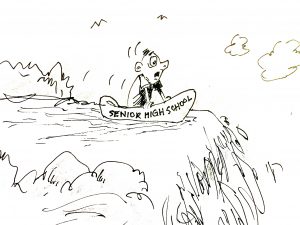The implementation of the K-12 program in the Philippines brought significant changes to the education system, particularly with the introduction of senior high school. While the additional two years of schooling aimed to enhance the quality of education, recent developments suggest that the senior high school system in the Philippines now finds itself in uncertain waters.
One major challenge plaguing the senior high school system in the Philippines is the inadequate allocation of resources and facilities. With the implementation of additional academic tracks and strands, schools struggle to provide the necessary tools, equipment, and learning materials necessary to effectively deliver quality education. The lack of updated textbooks, laboratory equipment, and facilities limited the opportunities for practical learning, hindering students’ comprehensive understanding of their chosen track. Hence, this resource shortfall poses a threat to the goal of honing well-rounded and competent graduates.
Another pressing issue in the senior high school system is the scarcity of qualified teachers across various specializations. The rapid expansion of the senior high school system created a need for teachers in specific academic tracks, such as sciences, engineering, and computer studies. Unfortunately, the limited supply of qualified professionals in these specialized areas created a gap in skill transfer. Consequently, students may not receive the requisite expertise needed to fully grasp and excel in their chosen disciplines, ultimately undermining the overall quality of education.
A critical aspect in assessing the efficacy of the senior high school system is its ability to adequately prepare students for their chosen career paths or tertiary education. However, recent assessments highlight a significant gap in aligning the skills developed at the senior high school level with the demands of tertiary education and employment. This disconnect jeopardizes the transition of students from senior high school to higher education or the workforce. The absence of a seamless transition resulted in wasted resources, time, and opportunities for the students, limiting their potential for success.
As the Philippine senior high school system continues to undergo challenges and perils, it is imperative to address key issues. To ensure the success of this educational milestone, policymakers, administrators, educators, and stakeholders must collaborate to develop sustainable solutions. The senior high school system should have fulfilled its potential by equipping students with the necessary skills to thrive in the dynamic socioeconomic landscape of the twenty-first-century Philippine society.




